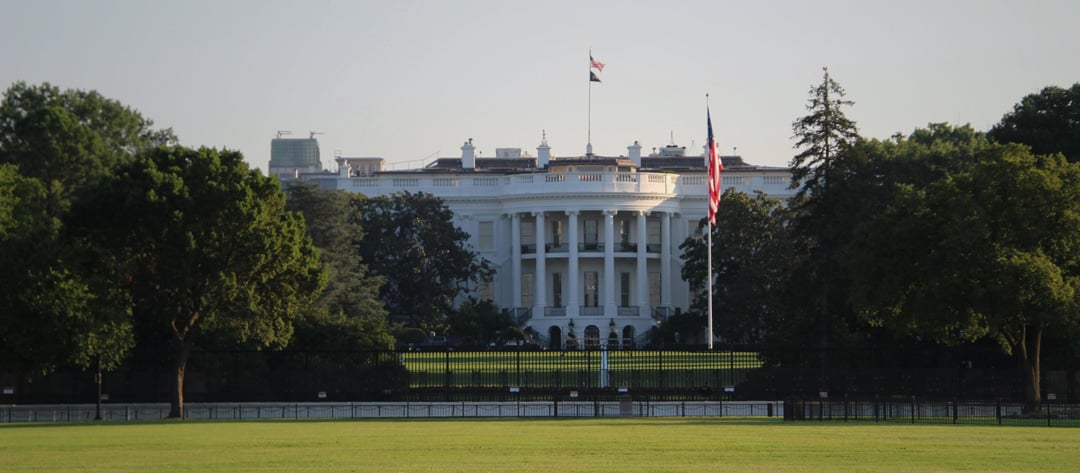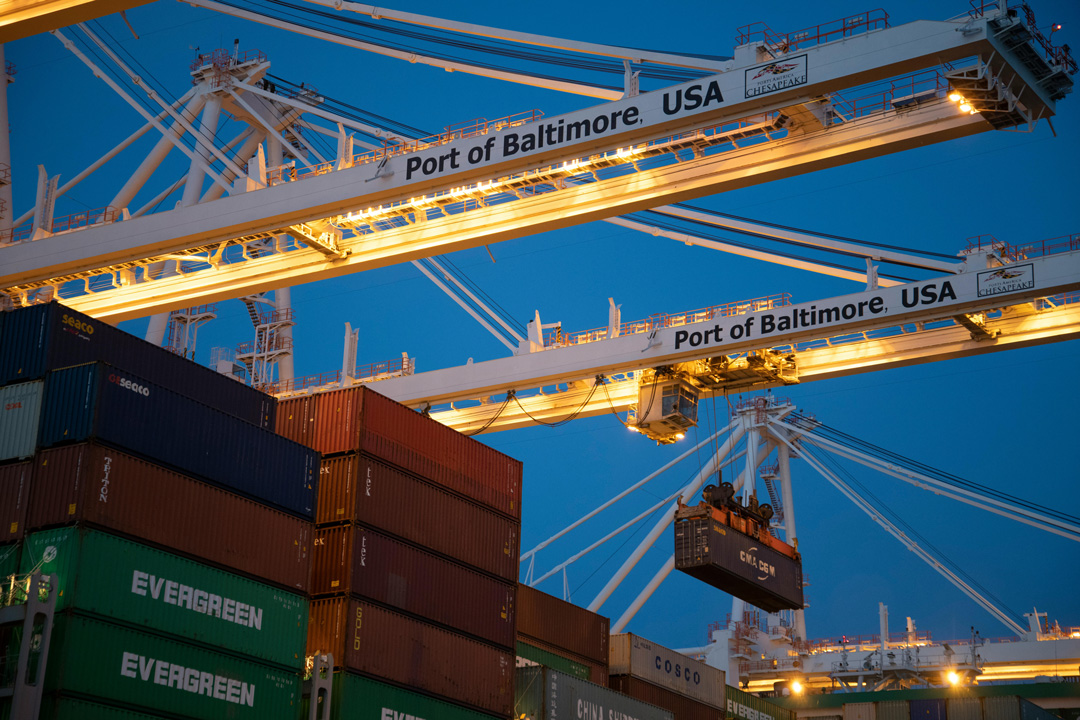On February 13, 2025, the White House released the Fact Sheet, President Donald J. Trump Announces “Fair and Reciprocal Plan” on Trade. It explains how a lack of trade reciprocity “is one source of America’s large and persistent annual trade deficit in goods: closed markets abroad reduce U.S. exports and open markets at home result in significant imports, both of which undercut American competitiveness.”
The Trump administration’s Fair and Reciprocal Plan called for new tariffs on countries with the highest tariffs on US exports. However, rather than matching other countries’ rates exactly, the US decided to match them by half. For example, Vietnam’s average tariff on US goods was 92% at the time, so the US planned to reciprocate with a 46% tariff.
Why Is Trump Imposing Reciprocal Tariffs?
As we can see in Trump’s letters to various governments, these reciprocal tariffs were intended to:
Balance America’s trade deficit with trading partners
His letters to presidents, including the one for the South African President, explain, “… these tariffs are necessary to correct the many years of South Africa’s tariff, and non-tariff, policies and trade barriers, causing these unsustainable trade deficits against the United States. This deficit is a major threat to our economy, and, indeed, our national security.”
Protect domestic US industries and encourage local manufacturing and investment
Trump states in multiple letters, like that to the Malaysian Prime Minister, that “There will be no tariff if Malaysia, or companies within your country, decide to build or manufacture product within the United States.”
Act as a negotiation tool to encourage other countries to reduce tariff and non-tariff barriers impacting US exports
Ending his letters with, “If you wish to open your heretofore closed trading markets to the United States, and eliminate your tariff, non-tariff, policies and trade barriers, we will, perhaps, consider an adjustment to this letter. These tariffs may be modified, upward or downward, depending on our relationship with your country.”
This leaves the door to trade negotiations with the US open if countries can offer suitable concessions.
Reciprocal tariffs can also have unintended consequences, like:
- Higher costs of imported goods, from raw materials to finished products, affecting everyone from consumers to manufacturers and resellers,
- Tough decisions for businesses, such as how to absorb the impact of higher costs and whether to raise prices, change suppliers, enter new markets, or move production to lower-duty regions, and
- Strained international relations that cause retaliatory tariffs from other countries or even full-blown trade wars, which we saw between the US and China until a 90-day truce was reached.
A key point in Trump’s letters is, “Goods transshipped to evade a higher tariff will be subject to that higher tariff.” This means global trade compliance is vital not only to avoid over- or under-paying tariffs but also to ensure your logistics correctly plan transshipments to prevent accusations of origin-washing or duties circumvention and to avoid paying even higher rates.
Accurate Certificates of Origin (COs) are also crucial for trade compliance. Even if your supplier provided the CO, due diligence is vital to prevent higher costs, penalties, delays, or denial of preferential treatment if your shipment hopes to use something like a Free Trade Agreement.
What Are the Reciprocal Tariff Rates?
Country |
Trade Surplus with America in May 2025 |
Rate Announced in April |
New Rate Announced in July |
|---|---|---|---|
| Algeria | $80.7 million | 30% | 30% |
| Bangladesh | $415.2 million | 35% | 35% |
| Bosnia and Herzegovina | $10.6 million | 35% | 30% |
| Brazil | $587.1 million | 10% | 50% |
| Brunei | $5.2 million | 24% | 25% |
| Cambodia | $986 million | 49% | 36% |
| Canada | $2,757 million | 25% | 35% |
| European Union | $21,886.7 million | 20% | 30% |
| Indonesia | $1.878 million | 32% | 32% |
| Iraq | $410 million | 39% | 30% |
| Japan | $4.848 million | 24% | 25% |
| Kazakhstan | $116.5 million | 27% | 25% |
| Laos | $291.4 million | 48% | 40% |
| Libya | $51 million | 31% | 30% |
| Malaysia | $2.355 million | 24% | 25% |
| Moldova | -$22.8 million | 31% | 25% |
| Mexico | $18,165 million | 25% | 30% |
| Myanmar/Burma | $53.6 million | 44% | 40% |
| Philippines | $715 million | 17% | 20% |
| Serbia | $58.7 million | 37% | 35% |
| South Africa | $132.4 million | 30% | 30% |
| South Korea | $6.041 million | 25% | 25% |
| Sri Lanka | $179.5 million | 44% | 30% |
| Thailand | $5.226 million | 36% | 36% |
| Tunisia | $31 million | 28% | 25% |
What Tech Goods Will US Reciprocal Tariffs Affect?
In mid-April, Trump exempted certain tech goods from tariffs, including computers, smartphones, and semiconductors.
Excluding these goods and more targeted tariffs on China, Mexico, and Canada, Trump’s country-specific reciprocal tariffs threaten to affect tech imports to the US of items like:
- Computer parts, routers, modems, and electronic integrated circuits from Taiwan,
- Computer parts and semiconductor materials from South Korea,
- Routers, modems, and disk storage units from Thailand,
- Construction machines from Japan,
- Routers and modems from Malaysia, and
- Routers, modems, computer parts, portable devices, solar panels, and LEDs from Vietnam (if the US-Vietnam trade deal is not signed).

Get ahead of the Liberation Day tariffs before they hit your tech supply chain. TecEx can help you evaluate your risk exposure and start multi-scenario planning to optimize your import strategies and minimize the impact of reciprocal tariffs on your bottom line.
A Timeline of Trump’s Reciprocal Tariffs
Visit our Tariff Tracker to keep up with the latest US tariff updates.
Delaying Liberation Day Until August 1
Before the July 9 deadline, Trump announced another delay in implementing the reciprocal tariffs. Despite this extension, he shared a post on Truth Social stating that the tariff letters and deals would be sent to the relevant countries from Monday, July 7.
What Does the Extension Mean for Global Trade?
During the three-week delay of the Liberation Day tariffs, we’re likely to see:
- Governments continuing to negotiate frameworks for trade deals and offer concessions to lower the reciprocal tariff rates,
- Businesses preparing to absorb tariff expenses, refining mitigation strategies, or searching for new export markets to counteract losses in the US market, and
- Importers and exporters front-loading shipments and orders to get their goods to the US before higher tariffs apply.
The Art of Making a Trade Deal | New US Trade Agreements
Only three deals were made before July 9 with the following countries:
The US-China Truce
The US and China reached an initial 90-day truce on tit-for-tat tariffs on May 12, which became increasingly shaky until the end of the month, and was eventually restored on June 12. The truce primarily aimed to stabilize bilateral trade and lower the sky-high tariffs each country had implemented.
The framework includes lower tariffs from both countries, expedited rare earth exports from China to the US, and lighter export controls on certain US goods going to China. High US import tariffs related to fentanyl, steel, and aluminum largely remain in place.
The truce ends on August 12, creating time for further negotiations and potentially a new bilateral trade deal.
The US-UK Economic Prosperity Deal
Initially announced on May 8, the US-UK EPD was finalized on June 16. The agreement prioritizes reciprocal trade between the two nations, with key terms aimed at reducing UK non-tariff barriers to US imports, reducing US tariffs on UK steel and aluminum, facilitating collaboration on economic security, and increasing US-UK digital trade.
US-Vietnam Trade Agreement
On July 2, Trump announced that a trade deal had been signed with Vietnam. On Truth Social, he explained that the tariffs on Vietnam would be lowered to 20% on most imports and 40% on transshipments. This last term likely targets China, as the US has previously criticized Vietnam for illegal transshipments of Chinese goods – duty circumventions like this undermine tariffs on Chinese-origin goods.
Negotiations | 90 Deals in 90 Days
Part of the goal was for the US to attain “90 deals in 90 days,” but the art of making a trade deal proved lengthier than expected.
Countries around the globe took multiple approaches to the uncertainty created by the deadline for the Liberation Day tariffs. These included negotiating and offering concessions to the US, making new trade deals with other countries, retaliating with tariffs on US imports, and prioritizing passive countermeasures like boosting domestic production.
Just two weeks before the July 9 deadline, trade talks continued with key trading partners like Canada, the EU, India, Japan, Malaysia, Mexico, Switzerland, South Korea, Thailand, and Vietnam.
Canada had an individual deadline of July 21, which became apparent after the US threatened to end trade talks with the nation over incoming Digital Service Taxes – which were quickly removed to allow negotiations to continue.
The EU similarly seemed aware that their negotiations with the US would likely require more than 90 days, possibly influencing President Trump’s decision to extend the deadline once more.

Liberation Day | “AMERICA WILL NO LONGER TOLERATE UNFAIR TRADE PRACTICES.”
Liberation Day arrived on April 2, when Trump invoked the International Emergency Economic Powers Act (IEEPA) to grant him emergency powers to implement reciprocal tariffs. A universal tariff of 10% was announced to take effect on April 5. The country-specific rates were set to take effect on April 9 but were delayed for 90 days until July 9th, while the universal rate was implemented on all foreign imports. However, Canada, Mexico, China, and certain commodities continued to face their own specific tariff rates.
Does Trump Have the Power to Impose Reciprocal Tariffs? The IEEPA Controversy
Almost 2 months after the initial Liberation Day, a US trade court deemed the tariffs under IEEPA as illegal. Later that day, an appeals court paused this ruling and allowed the tariffs to remain in place until the scheduled arguments on July 31.
However, with Section 122, 201, 232, 301, 338, and other investigations at the US President’s disposal, IEEPA is not the only means of implementing tariffs. This means that even if the ruling blocks the reciprocal tariffs, the Trump administration has other ways to justify them without IEEPA.



